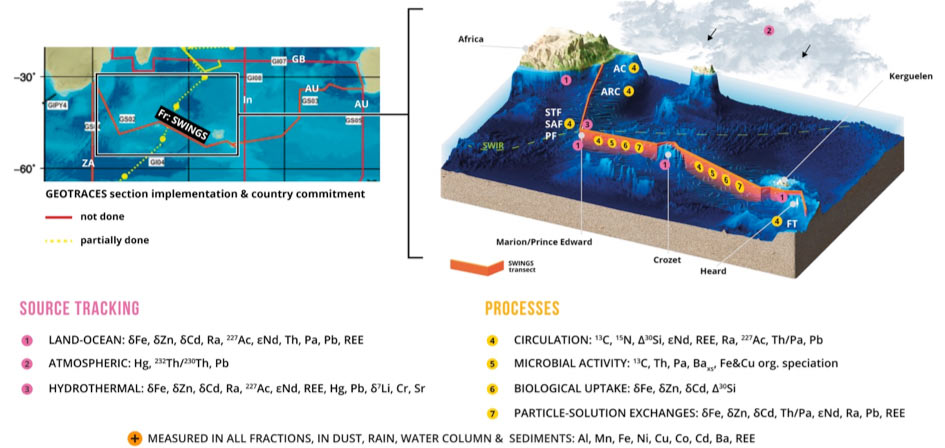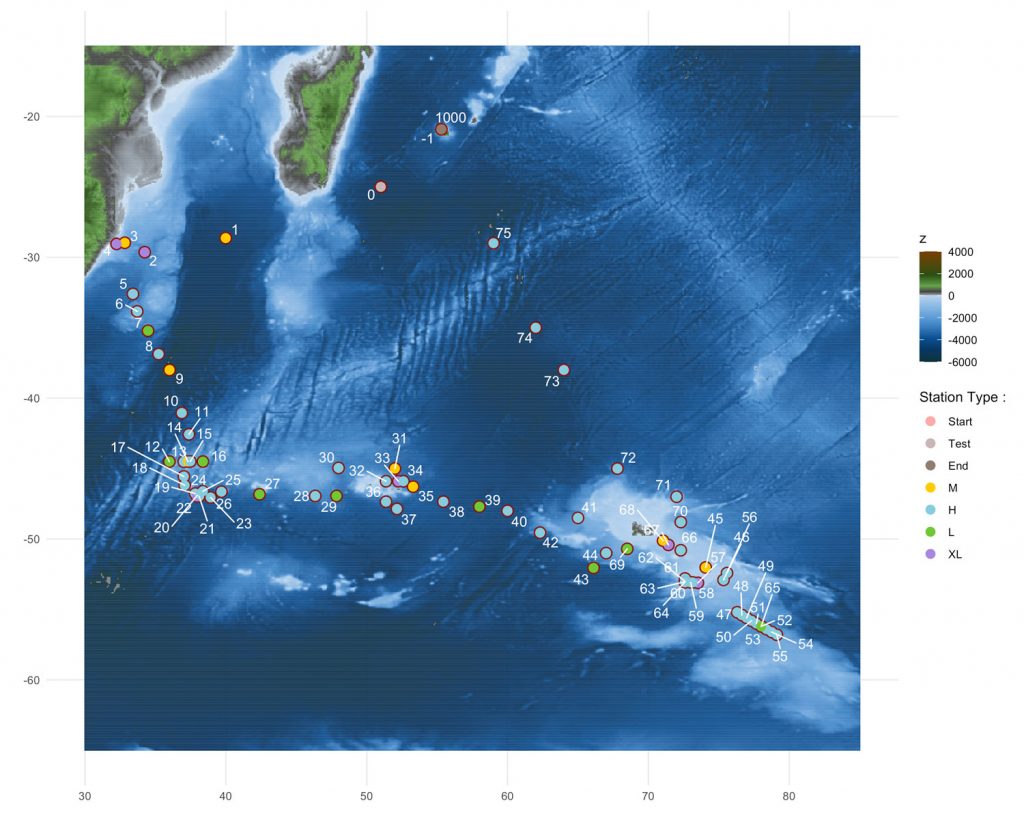Follow the French GEOTRACES GS02 SWINGS cruise in the Southern Ocean
In the remote Southern Ocean considered as a nutrient “hub” between the Atlantic, Pacific and Indian Oceans, the sources, sinks and processes controlling vital nutrient distribution and thus the biological carbon pump remain a black-box to date. In this context, SWINGS is a multidisciplinary 4-year project dedicated to elucidate trace element sources, transformations and sinks along a section crossing key areas of the Southern Ocean. Major French contribution to the international GEOTRACES programme SWINGS involves 80 scientists (19 international laboratories, 6 countries). The major piece of this ambitious project is the oceanographic cruise “SWINGS” (South Indian Ocean GEOTRACES Section) to which 48 researchers will participate.
The French GEOTRACES SWINGS GS02 cruise will start from La Réunion island (France) on January 13th, 2021 and end at the same place on March 8th, 2021. During 52 days, many stations will be sampled with various pieces of equipment on board the Marion Dufresne II research vessel in order to elucidate trace element sources, transformations and sinks in key areas of the Indian sector of the Southern Ocean contributing to the global effort of the GEOTRACES programme. The track of the cruise is reported below.
SWINGS will address the following 3 primary questions:
1. How is the relative importance of sedimentary, atmospheric and hydrothermal sources of TEI in the Indian sector of the Southern Ocean?
2. What are the drivers of internal TEI cycles: biological uptake, remineralization, particle fate and export?
3. Can we quantify TEI transport by the Antarctic Circumpolar Current and the complex frontal areas at the confluence between Indian and Atlantic Ocean?
SWINGS strategy relies on the strong coupling between physical oceanography, biogeochemistry and modeling. A major and original focus will be put on the characterization of the physical and chemical particle speciation in suspended and sinking particles that will be collected during SWINGS. Together with a high resolution sampling of the dissolved phases, the resulting SWINGS harvest of data will allow a major step forward in the understanding and quantification of dissolved-particle exchanges, a major recognized bolt for the element cycle modelling.
In addition of these scientific objectives, Catherine Jeandel (CNRS, LEGOS, Toulouse-France) and Hélène Planquette (CNRS, LEMAR, Brest-France), the cruise chief scientists, have designed an ambitious outreach programme. Several French schools as well as a penitentiary institution will be able to follow the cruise and learn about the cruise scientific activities and associated science thanks to educational materials developed and made available on an on-line cruise diary and through social media. Interestingly, the French Exploreur Journal will be also reporting regularly about the cruise and offering interviews of the cruise staff. To enlarge the audience who can benefit from this scientific adventure, a documentary director will join the cruise and shoot a video of the expedition which will be largely broadcasted later on.
Follow the cruise diary here: https://swings.geotraces.org/en/category/diary/
Follow the cruise on Twitter: https://twitter.com/swings_gs02

Crédit Sébastien Hervé, IUEM

